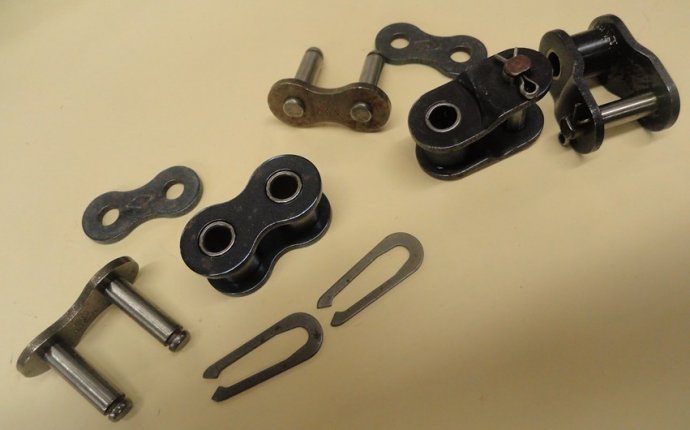
Chain link repair
 This article will review temporary repairs to address common on-the-ride chain problems, including tight links, broken chains, and twisted chains.
This article will review temporary repairs to address common on-the-ride chain problems, including tight links, broken chains, and twisted chains.
Preliminary Info
- Chain Tool or multi-tool with chain tool (e.g. MT-40 or IB-3)
- Master link or connecting rivet
- Spare chain links (optional)
These repairs will be sufficient to get you back home when you break your chain on a ride but anytime you break a chain it is necessary to replace your chain with a new one when you get home. You’ll need a multi-tool with a chain tool or a small chain tool such as the CT-5 to remove damaged links and to reconnect the chain if you’re not using a master link. You’ll also need a connecting rivet or master link to reconnect the chain. Consult your component manufacturer to ensure you use a compatible connector.
Tight Link
 A tight link will not rotate freely through the drivetrain components. Tight links are generally caused by a lack of lubrication, corrosion, or a poorly installed chain. A tight link can easily by identified by backpedaling and watching the chain as it passes over the cog. The tight link will not hinge around the cog as you back pedal. Once you’ve found the tight link, simply grasp the tight link between your hands and flex the chain laterally. This will open up the plates are resolve the tight spot.
A tight link will not rotate freely through the drivetrain components. Tight links are generally caused by a lack of lubrication, corrosion, or a poorly installed chain. A tight link can easily by identified by backpedaling and watching the chain as it passes over the cog. The tight link will not hinge around the cog as you back pedal. Once you’ve found the tight link, simply grasp the tight link between your hands and flex the chain laterally. This will open up the plates are resolve the tight spot.
Obvious tight link at derailleur pulley
Flex link laterally
Broken Chain
In all cases, start be removing any broken or damaged links so you can reconnect your shortened chain. Ideally you will have a master link or spare connecting rivet with you on your ride. It’s always a good idea to carry small parts like this with you in your repair kit since, if you break your chain out on a ride, you are dead in the water and having these spare parts on hand can make the difference between getting home and calling for a ride. But if you don’t have these parts with you, we’ll show you an alternate method as well.
It’s always a good idea to carry small parts like this with you in your repair kit since, if you break your chain out on a ride, you are dead in the water and having these spare parts on hand can make the difference between getting home and calling for a ride. But if you don’t have these parts with you, we’ll show you an alternate method as well.
Begin by removing rivet at damaged link
Master Link
If your chain uses a master link, press out both rivets to remove the damaged plates. Next, reconnect your chain using a master link. Pay attention to any directional arrows on the master link and ensure that they follow the direction of travel.
Remove second rivet at damaged link
Reconnect using master link
To engage the master link, make sure that it’s on the upper row of chain, apply the rear brake, and apply force to the pedals. What’s nice about a master link chain is that the length remains the same even after the fix so you’ll have all of your gears for the ride back. But remember, if you do end up having to remove some links, your chain is shorter and you should avoid shifting into your largest cogs and chainrings.













